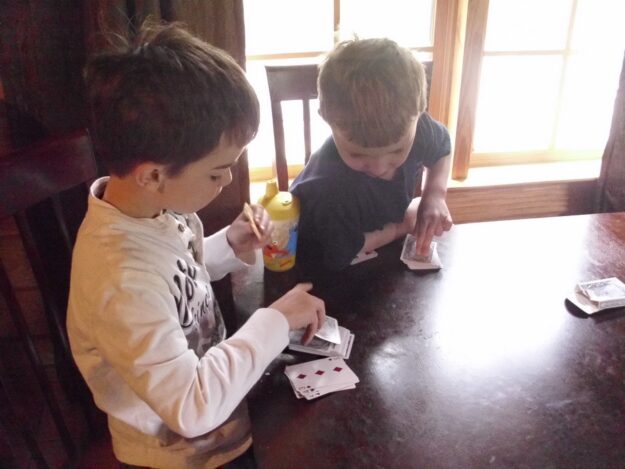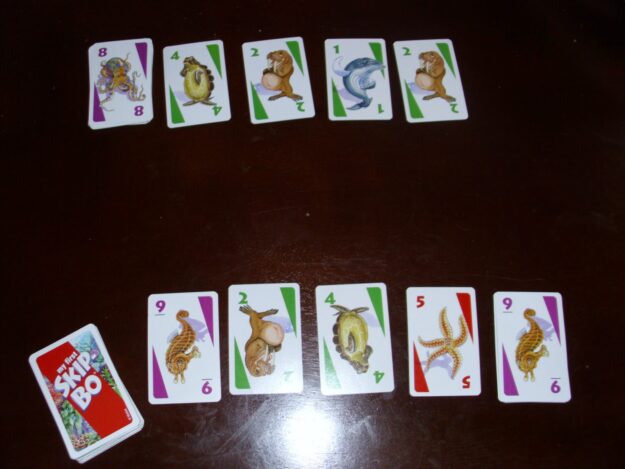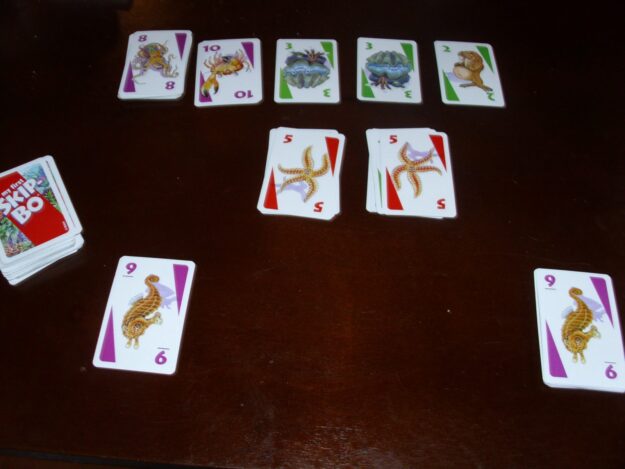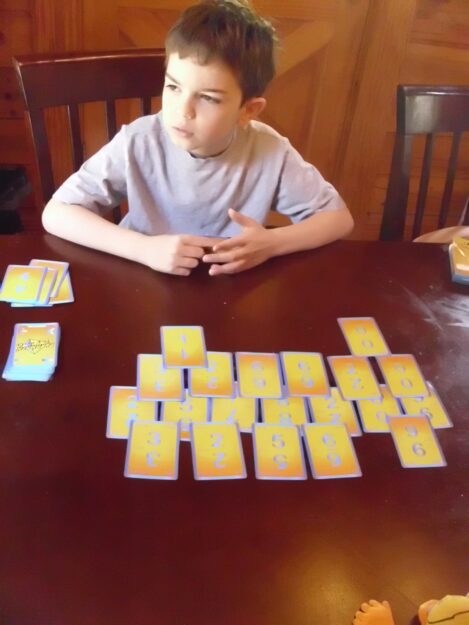Question: How can you make math fun? Answer: Introduce a deck of cards!
I first started using card games to teach my students during my career as a high school and middle school math teacher. Though the games we play now are a little different than they once were, we are still practicing number sense and math operations (just a different level). With a deck of cards, pre-school aged children, as well as high school students can practice their math. With our pre-k son, we practice number recognition, counting, and simple addition or subtraction. With our 2nd grader, we expand this to include multi-digit addition/subtraction, multiplication, and division.
A favorite for them to play together is War. This challenges our preschooler to think about ordering and comparing numbers and allows him to practice number recognition. Our 2nd grader gets to add the numbers together to practice his addition facts (or subtract for subtraction practice). As the boys get older, we can build upon this game to include addition and subtraction drills, as well as multiplication, division, and fractions.

There are many games you can play with a deck of cards. When we were having trouble with motivation on our addition and subtraction drill sheets, we decided to pull out a deck of cards to practice our math facts. We pulled out two cards at a time. Our preschooler’s job was to call out the problem for our 2nd grader (e.g., 5+3), who was in turn expected to answer as quickly as possible. Then we switched to subtraction, and voila! Both boys were having a great time doing the same thing I was struggling to get them to do just a few minutes prior. This can also be used to practice adding several numbers, multiplication, squares, cubes, exponents, and a combination of these operations.
A game I used to play with my middle school students was called 24. I would draw 4 cards and they had to determine if they could come up with 24 using math operations (including +/-, multiplication, division, exponents). They loved it!
For pre-k we play My First SkipBo. This simple game requires number recognition and ordering/comparing numbers. In this game, the dealer lays four cards face up, and 15 cards (for two players) in the “stockpile”, with the top card in that pile face-up. The rest of the deck is placed in the dealer’s pile.

During his/her turn, a player tries to create four stacks of cards in the middle using the overturned cards. These four stacks of cards can only begin with a 1 or ?. Other cards are then stacked on these four piles in order until you get to 10. The goal is to eliminate all of the 15 cards in the stockpile. The other face-up cards are used as helper cards to play the stock pile. At the beginning of each play, the dealer deals four new cards on top of the overturned helper cards for each player.

We plan to modify this game to practice counting evens/odds and skip count our multiplication facts as well.
Pyramath is another game that reinforces the basic number operations. These brightly colored cards (numbered 0-9) also include the English, Chinese, Arabic, and French translations, as well as the Roman numeral for each number. The game may be played with 5 or 7 cards, which are dealt out side-by-side (the base of the pyramid). For a two-player game, the first person draws a card from the deck and tries to place that card between two of the cards on his side of the pyramid. For example, if the base contains a 9-5-7-3-1-2-2, and the card drawn is a 4, it can be placed between the 7 & 3 because 7-3=4. The cards are played according to the number that is in the ones digit. So if the card drawn is a 0, it can be used either on 2-2 (2-2=0) or 7-3 (7+3=10) because a 0 is in the ones digit. The player continues to draw and play cards on the current level of the pyramid until he cannot play. Then the next player takes his turn. Once the current level of the pyramid has been completed, the player can move to the next level of his pyramid.

Our 2nd grader enjoys this game, though he needs a little bit of help with division at this point. But this would be a great game to play from about this age all the way up through high school. In the public school setting, I would use this game as a class opener or simply have it on hand in case students finish their work or tests early. It would be fun to have a little competition for an entire class as well!
These cards can also be used to teach the numbers in other languages. Mathematically, it can be modified for preschoolers by modifying the rules. They can build their pyramid based upon “what falls between” or simple addition/subtraction. The cards can simply be dealt out to be placed in order by a preschooler.
Other math card games we enjoy are Go-fish, Slapjack, and Uno. Interested in more ideas? Click here for more fantastic board and card games specifically geared towards math. Also check out our post on using board games to reinforce math.
How do you use a deck of cards to practice or learn math? We’d love to hear about your card games! Please share with us!
